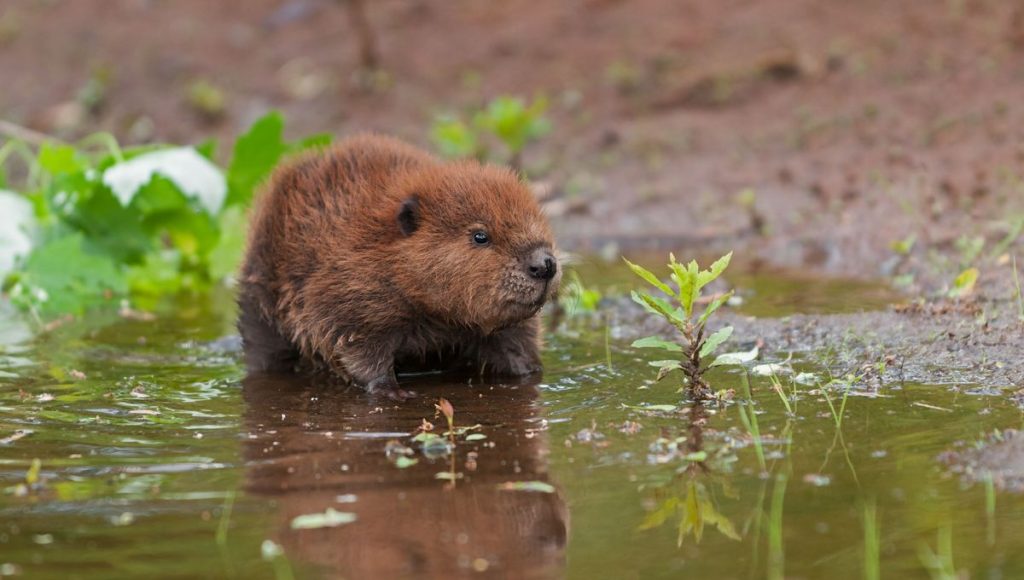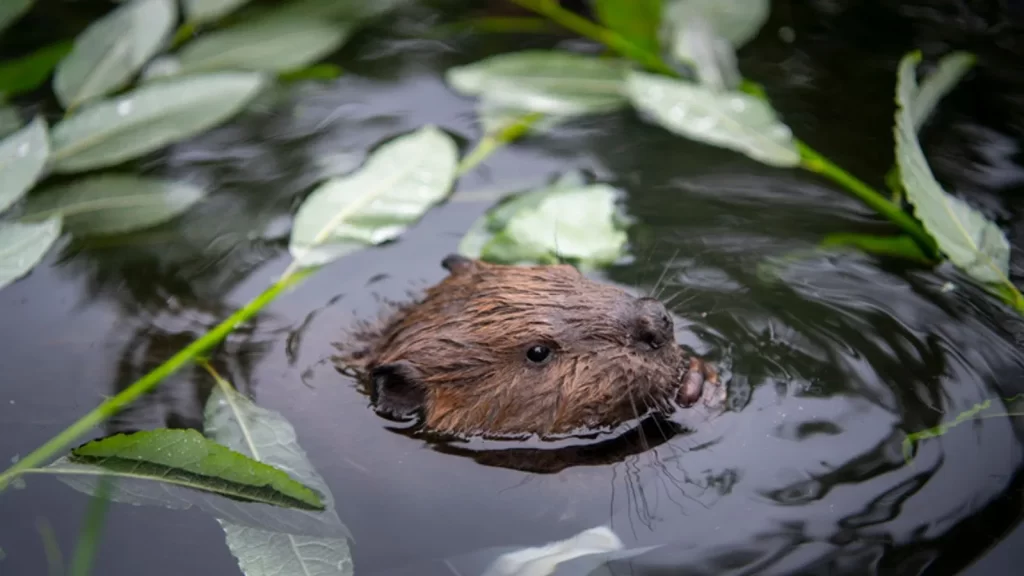Beavers are well-known for their ability to construct dams, which are essential for their survival. Dams provide beavers with a habitat and protect them from predators. In this detailed description, we will explore the process of how beavers build their dams, the benefits of the dams, and the impact they have on their ecosystem.

- Selecting a Site:
The first step in building a dam is selecting a suitable site. Beavers prefer areas with a steady supply of water, such as rivers or streams. They look for a location where the water is deep enough to submerge their lodge and has a gentle slope to allow for the accumulation of materials.
- Gathering Materials:
Once a site is selected, beavers begin to gather materials for their dam. They use a combination of mud, sticks, and stones to create a secure structure. Beavers usually gather materials close to the site, dragging them with their teeth or carrying them in their forepaws. They work tirelessly, constructing the dam bit by bit.
- Building the Foundation:
The first layer of the dam is the foundation, which serves as the base for the structure. Beavers create a pile of sticks and mud to form a stable base. They also use stones to anchor the structure and prevent it from being washed away by the current.
- Adding Layers:
Once the foundation is in place, beavers continue to add layers of sticks, mud, and stones to the structure. They use their tails to compact the materials, making sure that they are tightly packed and secure. As the dam grows taller, beavers begin to drag larger logs and branches to the site, using them to reinforce the structure.
- Construction of Lodges:
Beavers often construct lodges within their dams. The lodges are a safe place for them to live, and they provide them with easy access to their food source. The lodges are made of sticks, mud, and grass and are usually located in the deepest part of the pond, directly behind the dam.
- Maintenance:
Once the dam is complete, beavers maintain it by adding new materials and repairing any damage. They continue to add layers of sticks, mud, and stones to reinforce the structure, making sure that it remains sturdy and secure.

7. Benefits of Beaver Dams:
Beaver dams provide a range of benefits to their ecosystem. They create a habitat for a variety of animals, including fish, birds, and insects. The ponds created by the dams serve as breeding grounds for fish and provide shelter for amphibians. The dams also help to regulate the water flow, preventing flooding during heavy rains and reducing the impact of droughts.
8. Impact on Ecosystem:
Beaver dams have a significant impact on their ecosystem. They create a new microhabitat within the stream or river, which affects the flow of water, sediment, and nutrients. The dams can cause flooding upstream, which can have negative effects on human settlements and agriculture. However, the positive effects of the dams often outweigh the negative, as they provide many benefits to the ecosystem.

In conclusion, beavers are remarkable animals with an incredible ability to construct dams. The process of building a dam begins with selecting a suitable site and gathering materials. Beavers create a stable foundation, adding layers of sticks, mud, and stones to create a sturdy structure. The dams provide many benefits to the ecosystem, creating habitats for a range of animals and regulating water flow. While the dams can have negative effects on human settlements and agriculture, their positive impacts often outweigh the negative. Overall, beavers are an essential part of their ecosystem, and their dams are a testament to their remarkable engineering abilities.